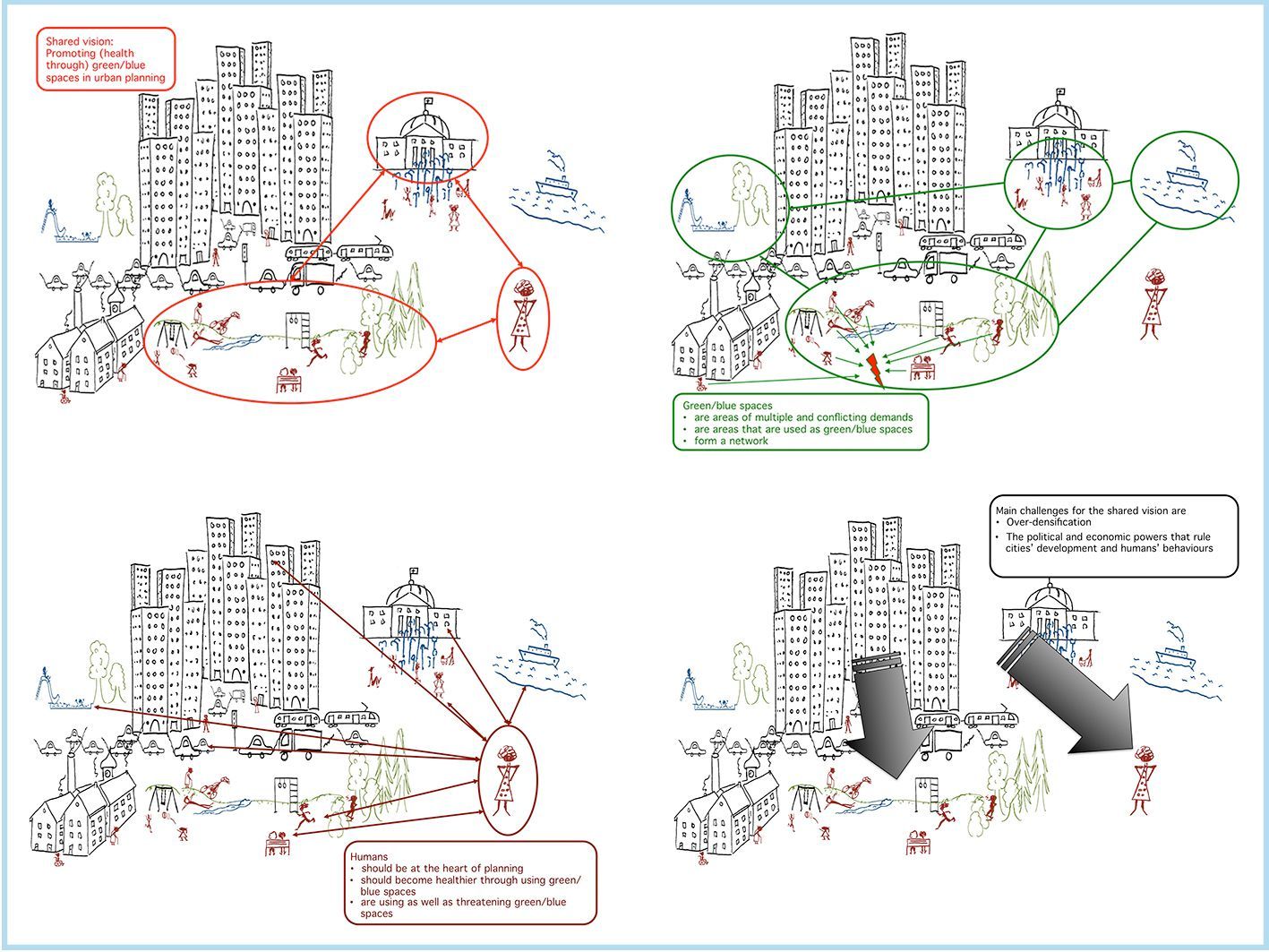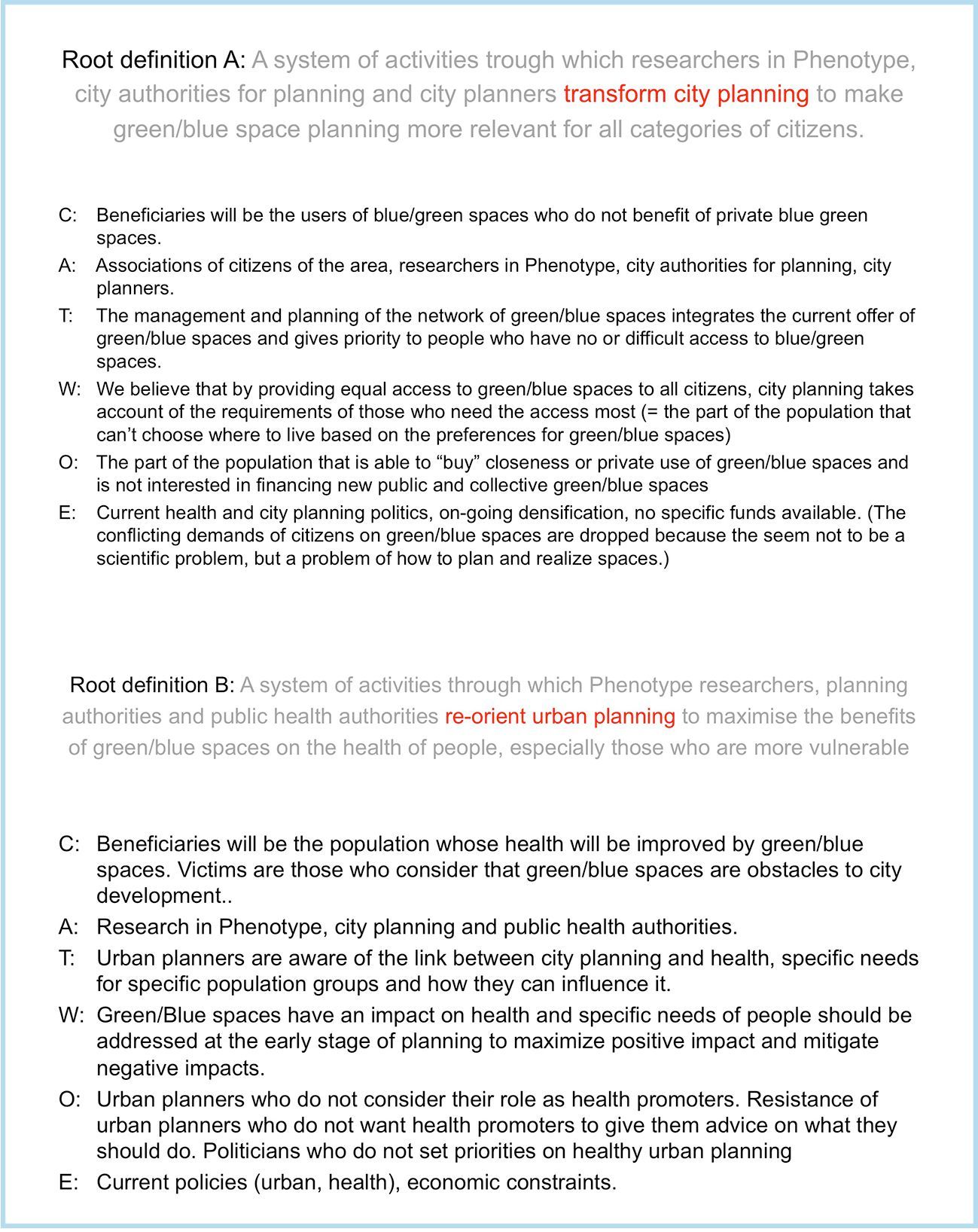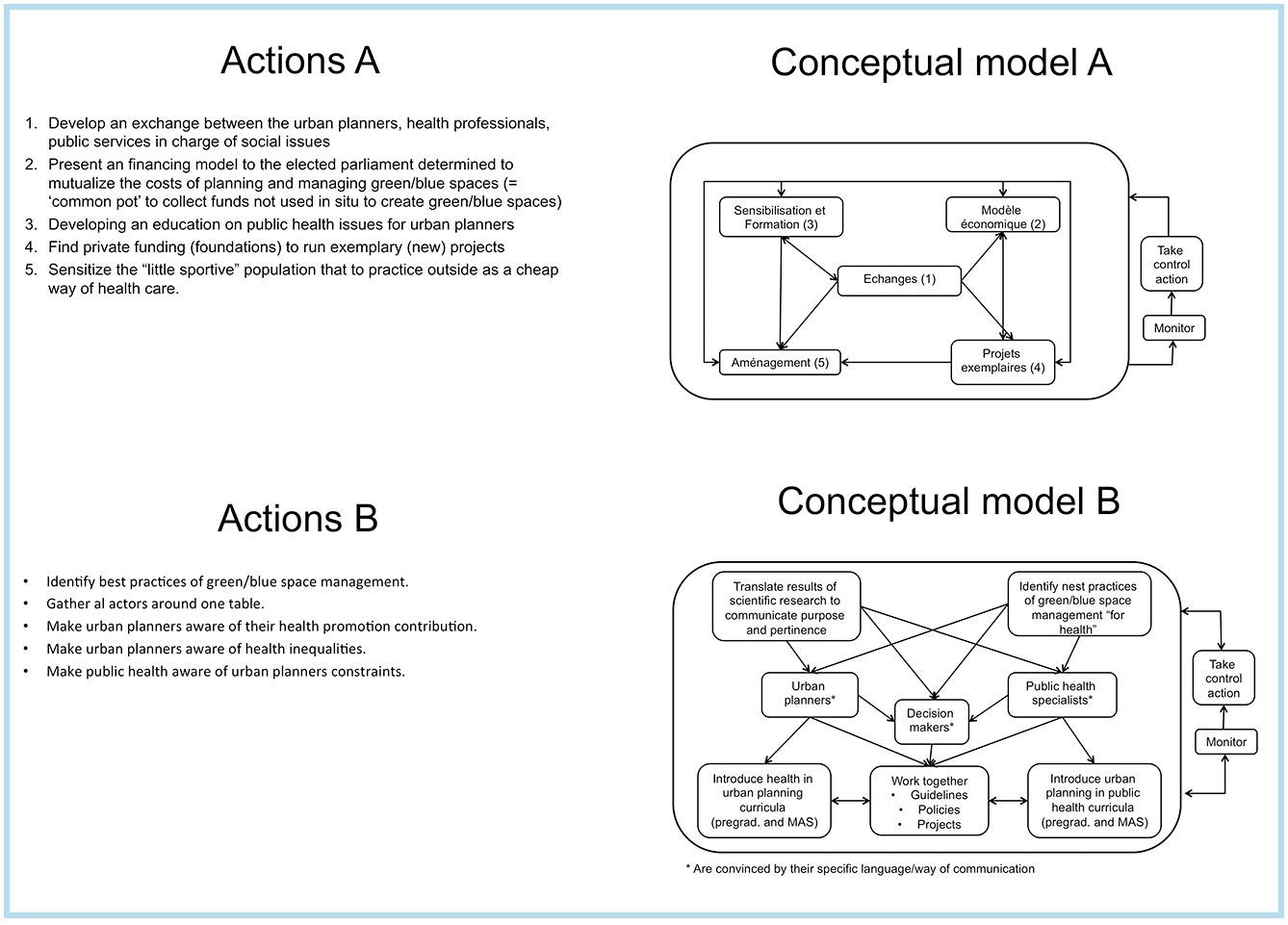Testing soft systems methodology in a multi-stakeholder advisory board
Downoad report:
Context
We tested softs systems methodology (ssm) between November 2012 and November 2015 in collaboration with Work package 5 of the EU research project PHENOTYPE (http://www.phenotype.eu). PHENOTYPE studied the positive health effects on humans of green (= plants) and blue (= water) spaces in cities. Work package 5 was about “Implications, Health Impact Assessment and Planning“. The aim was to run a meta-analysis of the current knowledge and to ‘translate’ the insights into recommendations and guidelines for policy makers and professional practitioners. Prof. Dr. Roderick Lawrence (University of Geneva), who led work package 5, agreed to test ssm within the Swiss National Advisory Board (NAB)he had convened. The role of the NAB was to critically review and comment the progress of work package 5, among other things to align it with stakeholders’ requirements. The board brought together nine experts from science (sport science, social ecology), the private (social work, urban planning) and the public sector (local and regional planning authorities), as well as civil society (health promotion).
Ssm was one of the items on the agenda of the board’s yearly meeting, the main item being the progress of the project. We introduced ssm as test of a method to co-produce knowledge in heterogeneous groups. We performed 1 step each meeting. This large timeframe is not the usual way of using ssm, but we seized the opportunity to apply a test.
Purpose
We wanted to see whether ssm would help a team of researchers and practitioners to come up with innovative “feasible and desirable” changes (Checkland, 1994, 167) to a system. The changes should integrate insights gained in the PHENOTYPE project in the system of city planning and development.
Procedure employed
Step 1: Expression of the problem situation (rich picture)
Implementation
At the first meeting of the board, 1.5 hours were reserved for ssm. Based on the inputs and discussions of the first part of the meeting, we formulated the following task for the ssm exercise:
Our shared vision is something like “Promoting (health through) green/blue spaces in urban planning”. Please draw a rich picture showing your current perception.
After drawing for around 15 minutes, each board member explained his/her picture to the others. The explanations triggered further discussions (10 minutes per rich picture). Following the meeting the moderator (=me) drew an overall rich picture, based on the individual rich pictures and on the minutes of the presentations and discussions. Compiling the overall rich picture took around 2 days.

Challenges
- The literature we read was not clear about whether the rich picture is best produced individually, in sub-groups, or in the group. Also we were not sure how to weight the individual pictures/contributions when drawing an overall picture. We decided to start with individual pictures and to learn about each other’s picture by presentations. The moderator integrated and weighted the individual contributions on his own.
- In case the moderator draws the overall rich picture, it is key to record the participants’ explanations when presenting the individual picture as well as the discussions that follow. Taking notes, however, takes one person’s full attention and can’t be done by the moderator.
- Integration and weighting can also be delegated to the participants. Either the moderator can ask them to draw one joint picture. Or (s)he can let them draw an individual rich picture first, then let it explain to each other, followed by the task to develop a joint rich picture. The reason for making participants to draw individually at the beginning of this exercise is to benefit from the richness of perspectives.
Step 2: Root definition
Implementation
One hour was reserved for ssm at the second meeting of the board. We summarised the rich picture developed a year ago and introduced step 2, which serves brainstorming possible improvements of the problem situation using root definitions. We explained the term “root” in the sense that one cannot change the whole system (= rich picture) at once, but has to root transformations at a specific place in the system. We provided three examples of root definitions (10 min). We then asked the members of the board either to contribute a further root definition, or to elaborate one of the three examples (20 min). Then the members shared their root definitions with the group (20 min, 3-4 min per root definition).
Summarizing the results took the moderator around 3-5 hours, including the preparation of slides, and translating the contributions made in French. The slides were sent to the respective board members for review.
Results

Challenges
- Some of the language and use of words of Checkland is peculiar (root definition, environment). Other expressions are easier to understand (the CATWOE questions), but trigger challenging questions (e.g. what is meant by “Weltanschauung”). We recommend that the moderator takes time to get familiar with the language. Preparing examples helps to delve into Checkland’s thinking.
- It is not very clear from literature whether a root definition in one sentence includes the CATWOE elements or not. If so, how it can be formulated in an understandable way. This is why we recommend participants to start with a root definition in a simple sentence with the following structure: “What has to be transformed, by whom, for what purpose”. The CATWOE questions are then used to critically review and improve the root definition.
Step 3: Making and testing conceptual models
Implementation
At the third meeting of the board 1.5 hours were reserved for ssm. The rich picture, and the root definitions were briefly recapitulated and the board members were given time to review and adapt what they had provided a year ago (15 minutes). We used Figure A6 from Checkland (2000, 31) to introduce step 3. The board members were then given 30 minutes to brainstorm 7±2 concrete activities required to carry out the transformation (using verbs in the imperative) and to organise these activities in a conceptual model. The conceptual models were shared and discussed (7 minutes per model). One member had missed the last meeting. He was asked to group with any of the other members.
We closed the meeting with introducing step 4 as a step that each board member can do individually: Compare the conceptual models with reality and identify feasible and desirable changes.
Results

Challenges
We expected the conceptual models to come up with innovative and ‘out of the box’ suggestions for how to change the system. The suggestions were, however, rather slight adaptations of to the current practice. Either our expectation was wrong, or we did not understand in which step(s) the seed of innovation and creativity should be planted.
Reviewing the process: Lessons learned
At the final meeting we reviewed the results. We asked the board members to answer the following question: “Did the method help you to develop creative and feasible new ideas for promoting health through green and blues spaces in urban planning?” The board members answered that ssm
- Helped to synthesise and clarify ideas;
- Offered a structured way to exchange and discuss on an issue;
- Was appreciated for developing a visual understanding of a problem;
- Allowed dialogue on equal footing: Usually in such discussions and advisory boards (perceived) inequalities between experts and practitioners influence discussions strongly. The method was able to bring them to the background (all were experts); and
- Did not help to think out of the box, but to get to know new ideas from other board members.
One of the members saw a great potential in the method if it was used in another context (in a “Houston, we have a problem” situation). He noted that the board was however not in charge of anything, but should give expert advice on the PHENOTYPE project. “So we had to image ourselves as having something to say”.

